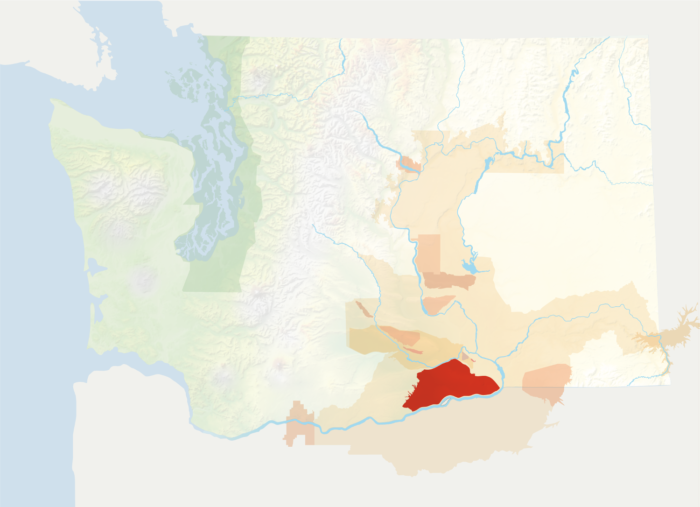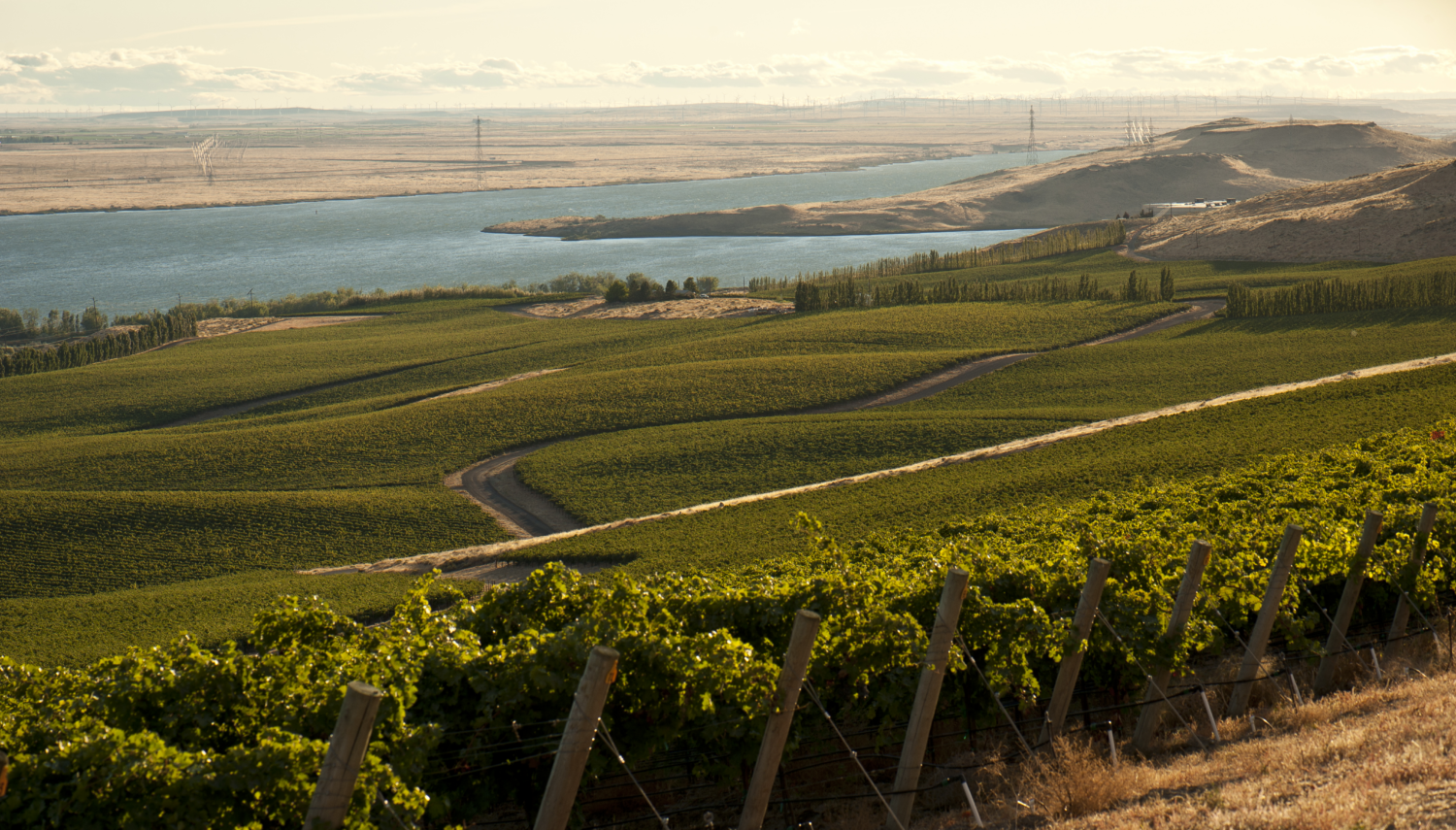Location: South-central Washington
Designated: 1983
Total Size: 665,600 acres
Acreage Under Vine: 17,082 acres (6,912 hectares)
Top Varieties: Chardonnay, Riesling, Merlot, Cabernet Sauvignon
Soils: Deep silt-loam over basalt bedrock and gravel
Average Annual Precipitation: 8 inches
Two Things to Know:
- The Horse Heaven Hills is a warm, windy region.
- It is home to one-quarter of Washington’s wine grape acreage.
The appellation takes its name from an early pioneer who said upon seeing the region and its wide prairies and expanses, ‘‘Surely this is Horse Heaven!”
The area is among Washington’s warmer growing regions, making it an ideal place for Cabernet Sauvignon which makes up a large percentage of plantings. Many vineyards in the Horse Heaven Hills are planted on south-facing slopes, providing for extended sun exposure.

Like many of Washington’s growing regions, the Horse Heaven Hills is located on an anticline of the Yakima Fold Belt, which are a series of uplifts in the earth that create slopes ideal for grape growing. The area has an arid and semi-arid, continental climate. As with almost all areas of eastern Washington, irrigation is therefore required to grow wine grapes.
Pressure differentials cause significant winds in the Horse Heaven Hills. These winds reduce canopy size and toughen grape skins, as well as protect against mold and rot. The nearby Columbia River also has a moderating affect on temperatures, reducing the risk of early and late season frosts, which can be a problem in nearby areas.
There are three main soil types in the area— wind-blown sand and loess, Missoula Flood sediment, and hill slope rubble from the Columbia River basalt bedrock. Each of these provides well-drained soils suitable for vinifera.
The Horse Heaven Hills had its first vinifera plantings in 1972 at what is now Champoux Vineyard.

